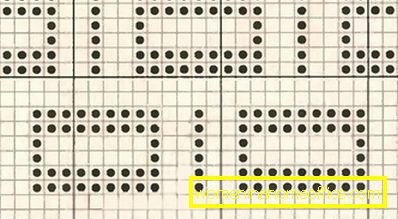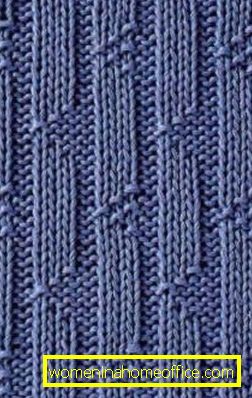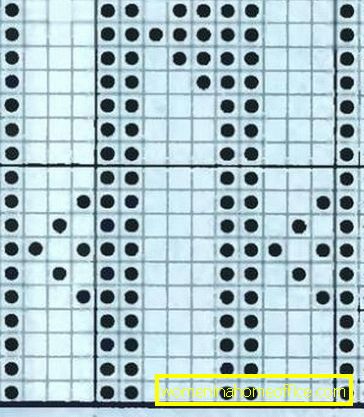Knitting
Knowing how to knit is really great! After all, in this case, you can kill two birds with one stone - you can wear exclusive things, that is, those that probably no one else has, because you yourself will think through the models and their design. In addition, you significantly save on the purchase of clothes for your family, because you do not have to give money to work on a thing.
Nezhezhnye patterns spokes for beginners
Non-sticky patterns are those patterns that are one continuous canvas, without so-called "holes." Things related to such a scheme are most suitable for wearing in winter - various sweaters, jackets and sweaters with long sleeves, hats, shirt-fronts, gloves and socks.
"Checkered"


Conventions for this scheme:
- + - edge loop
- ● - front loop
- □ - purl loop
All even rows provyazyvaem purl loops.
-
 Simple knitting patterns
Simple knitting patterns -
 Patterns for knitting a scarf
Patterns for knitting a scarf -
 Simple openwork patterns
Simple openwork patterns
"Small checkered"
The picture is very similar to the previous one, but much smaller. Looks neat, well suited for knitting children's suits, sweaters and blouses.


The conventions for this scheme are exactly the same as for the previous one.
"Spikelets"
We knit something like a rubber band. Therefore, the things that you associate with this pattern will be slightly tight. Keep this in mind. Symbols of the scheme are identical to the previous ones


"Boats"
Knitting is well suited for knitting men's sweaters and jumpers, as well as children's clothes for the boy. The drawing is more than simple.


The symbols for this scheme, you can see under the picture number 1.
-
 Knitting english gum
Knitting english gum -
 Knitting from thick yarn
Knitting from thick yarn -
 Knitting for full
Knitting for full
"Rhombi"
The picture is very beautiful, it looks spectacular. However, it is unusually simple - only the front and back loops. The picture is suitable for knitting men's sweaters and jumpers, as well as children's blouses for boys.


The legend of the scheme is identical to the above.
For a start, it is not necessary to immediately knit the thing with a pattern of your choice. You can try to tie a pattern by which you can judge whether your pattern is so obtained, whether you like it. When you manage to knit simple patterns, you can move on to slightly more complicated patterns - openwork.
Openwork patterns knitting needles for beginners
Openwork patterns are more gentle and airy. Imjazhut summer sweaters, jumpers and sundresses. In addition, women's winter sweaters and sweaters can also be connected with an openwork pattern.
"Lace diamonds"


Conventions for this scheme:
- Empty cage - purl loop
- Nakid Circle
- "T" with an inclination to the right, remove one loop, knit the next one with a purl, grab the loop that was removed and pull the one that was knitted through it.
- "T" with an inclination to the left; two loops are knitted together front.
-
 Rapport knitting
Rapport knitting -
 Knitting from mohair
Knitting from mohair -
 Patterns for knitting hats
Patterns for knitting hats
"Sail"


Notice that not all the conventions match the conventions of the previous schema. For example, here the empty cell denotes the front loop, but we still knit the even rows with purl loops.
"Lace diamonds"

Figure openwork, but at the same time, it is quite dense. So it is ideal for a winter sweater or sweater for women and girls.
"Lace leaflets"

The drawing is incredibly beautiful. And do not be afraid of the fact that the scheme, at first glance, seems rather complicated. In fact, this is not so - it is enough to read the legend to verify this.
Knitting patterns for beginners: photo





It is possible to tie not only openwork and non-laced patterns on the knitting needles. There are all sorts of other mating, for example, braids. But such patterns are considered more complex and not quite suitable for those who are just beginning to knit. When you are well-made openwork and non-laced patterns on the needles, you can move on to more complex patterns.
Successes to you in this not always simple, but such a fascinating business!